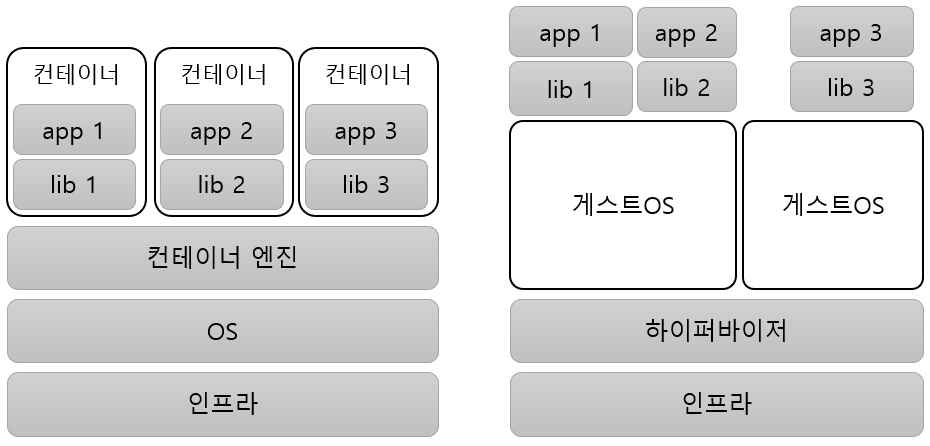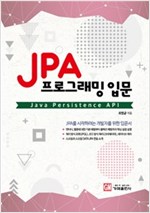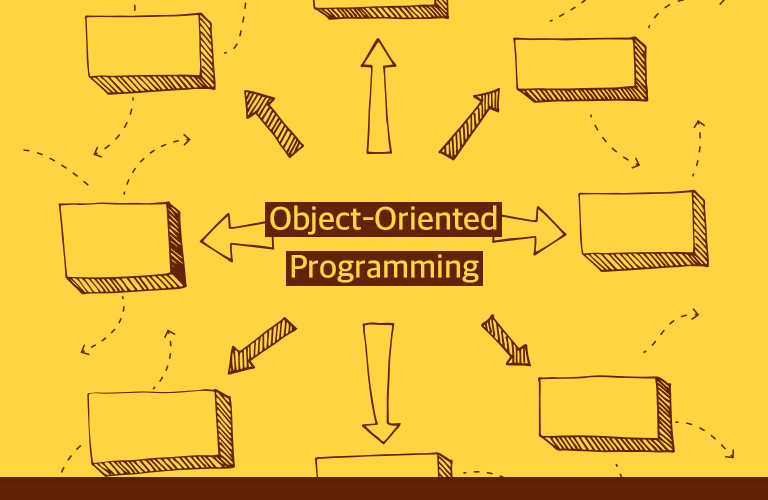도커는 소프트웨어를 빌드하고 실행하기 위한 소프트웨어다. 도커를 사용하면 웹 서버, 명령행 프로그램 등의 소프트웨어를 설치하고, 출시하고, 실행하고, 삭제하는 과정을 단순화할 수 있다. 이를 위해 도커는 OS의 컨테이너 기술을 사용한다.
docker run hello-world 실행 과정 보기
도커 시작하기 0 : 우분투에 도커 설치하기에서 docker run hello-workd 명령어를 실행했는데 이 명령어를 처음 실행할 때 표시되는 메시지는 다음과 같다.
vagrant@ubuntu-bionic:~$ docker run hello-world
Unable to find image 'hello-world:latest' locally
latest: Pulling from library/hello-world
1b930d010525: Pull complete
Digest: sha256:b8ba256769a0ac28dd126d584e0a2011cd2877f3f76e093a7ae560f2a5301c00
Status: Downloaded newer image for hello-world:latest
Hello from Docker!
This message shows that your installation appears to be working correctly.
...생략
For more examples and ideas, visit:
https://docs.docker.com/get-started/첫 번째 실행하면 "Hello form docker!" 문장이 출력되기 이전에 'hello-world:latest' 이미지를 로컬에서 찾을 수 없어 다운로드했다는 메시지를 볼 수 있다.
docker run hello-world 명령어를 다시 실행해보자.
vagrant@ubuntu-bionic:~$ docker run hello-world
Hello from Docker!
This message shows that your installation appears to be working correctly.
...생략이번에는 이미지를 다운로드하지 않는다. hello-world는 도커가 소프트웨어를 배포할 때 사용하는 단위인 이미지의 이름으로 docker run 명령을 이용해서 이미지를 실행하면 도커는 다음 과정을 거친다.

도커는 실행할 이미지가 로컬에 존재하는지 확인한다. 존재하지 않으면 이미지를 먼저 다운로드한다. 이미지 파일은 도커 허브라는 곳에 위치하며 도커 허브에서 해당 이미지 파일을 다운로드한다. 다운로드가 끝나면 이미지에서 컨테이너를 생성하고 실행한다. 프로그램 파일이 있고 그 프로그램을 실행하면 프로세스가 생기는 것처럼 이미지 파일이 있고 이 이미지를 실행하면 컨테이너가 생성된다.
docker images 명령어를 실행하면 로컬에 설치된 이미지를 표시한다. 실행하면 다음과 같이 hello-world:latest 이미지가 존재하는 것을 확인할 수 있다.
vagrant@ubuntu-bionic:~$ docker images
REPOSITORY TAG IMAGE ID CREATED SIZE
hello-world latest fce289e99eb9 8 months ago 1.84kB이번에는 docker container ls -a 명령어로 컨테이너 목록을 확인하자. 아래와 같이 두 개의 컨테이너가 표시되는 것을 알 수 있다. docker run 명령어는 실행할 때마다 컨테이너를 생성하므로 docker run hello-world 명령어를 실행한 횟수만큼 컨테이너가 만들어졌다.
vagrant@ubuntu-bionic:~$ docker container ls -a
CONTAINER ID IMAGE COMMAND CREATED STATUS PORTS NAMES
420592ad5d1e hello-world "/hello" 24 minutes ago Exited (0) 24 minutes ago youthful_lovelace
6441f60ab2e2 hello-world "/hello" 39 minutes ago Exited (0) 39 minutes ago youthful_lamarr
컨테이너
컨테이너 대한 소개는 https://www.docker.com/resources/what-container 문서를 참고한다. 이 문서는 컨테이너를 다음과 같이 설명하고 있다.
Containers are an abstraction at the app layer that packages code and dependencies together. Multiple containers can run on the same machine and share the OS kernel with other containers, each running as isolated processes in user space. Containers take up less space than VMs (container images are typically tens of MBs in size), can handle more applications and require fewer VMs and Operating systems.

어플리케이션을 구동하는데 필요한 의존은 컨테이너 안에 포함된다. 한 컨테이너에 포함된 의존은 다른 컨테이너에 영향을 주지 않는다. 예를 들어 app 1은 lib 1 버전이 필요하고 app 2는 lib 2 버전이 필요하다고 하자. 한 OS에서 app 1과 app 2를 함께 실행하려면 lib 1과 lib 2를 모두 설치해야 한다. 만약 lib 2를 설치하면 lib 1이 비정상 동작한다면 한 OS에서 app 1과 app 2를 함께 구동할 수 없게 된다. 컨테이너를 사용하면 이런 문제가 발생하지 않는다. 컨테이너는 서로 격리된 환경에서 구동되므로 라이브러리 버전 충돌이 발생하지 않는다.
컨테이너는 격리된 환경에서 돌아가므로 한 컨테이너의 어플리케이션에 문제가 발생하더라도 OS나 다른 컨테이너에 주는 영향을 최소화할 수 있다.
도커, 컨테이너
도커는 이 컨테이너를 사용하는데 필요한 도구를 제공한다. 도커는 cgroup과 네임스페이스에 대한 자세한 이해가 없어도 컨테이너를 사용할 수 있게 만들어 주었다. 이런 이유는 도커는 출시 이후 빠르게 컨테이너를 위한 대세 기반 기술로 자리 잡았다.
관련 글





